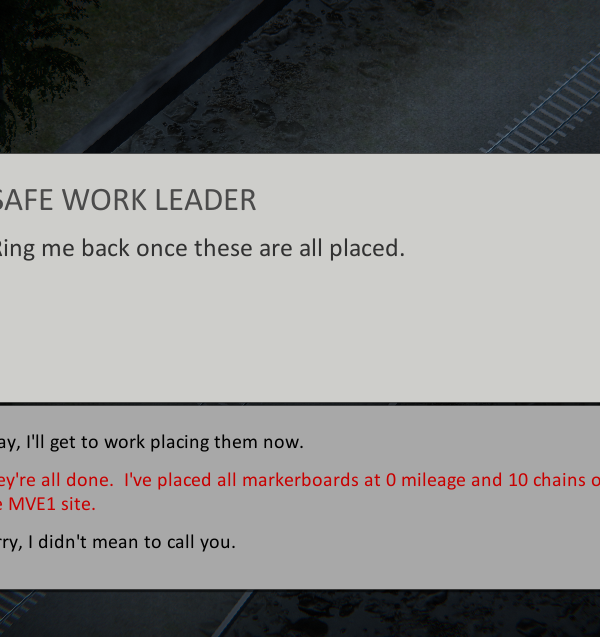


After a number of complexities with protection board placement D2 was asked if they could assist with a training program designed to train staff on the guidelines for placing protection boards. The solution was a web based interactive training program designed to highlight the dangers of incorrect board placement.
The Digital Technology team worked closely with Amey to outline the requirements for the training program. The main aim was to give users training of the correct process in a safe environment without being on site. It was decided that the system would also have additional hidden objectives that users would be expected to respond to in normal working conditions such as safety risks and critical conversations.
One challenge the Digital Technology team faced was making the user controls as friendly and intuitive as possible. As the system had movement and placement modes there were a lot of controls that the user would need to learn. The solution was to provide a fully mouse or touch based control set that switched modes depending on the users needs. An on-screen help system also led the user through.
Adding hidden goals while also allowing the user to spot them was also a challenge. The solution was to place these goals on the user’s path while completing the main program goals. A dynamic camera system that adjusts based on user input was also created to guide the user in the right direction.
D2 provided a web-based training program that could be completed on laptops and tablets remotely with no need to be on site. The program allowed users to act out a standard protection placement scenario in a safe environment, with additional goals and objectives helping keep user attention and engagement through the program. A result and score on completion of the program enabled usable and measurable feedback to both user and trainer. This can help identify areas of improvement or knowledge caps for the user.